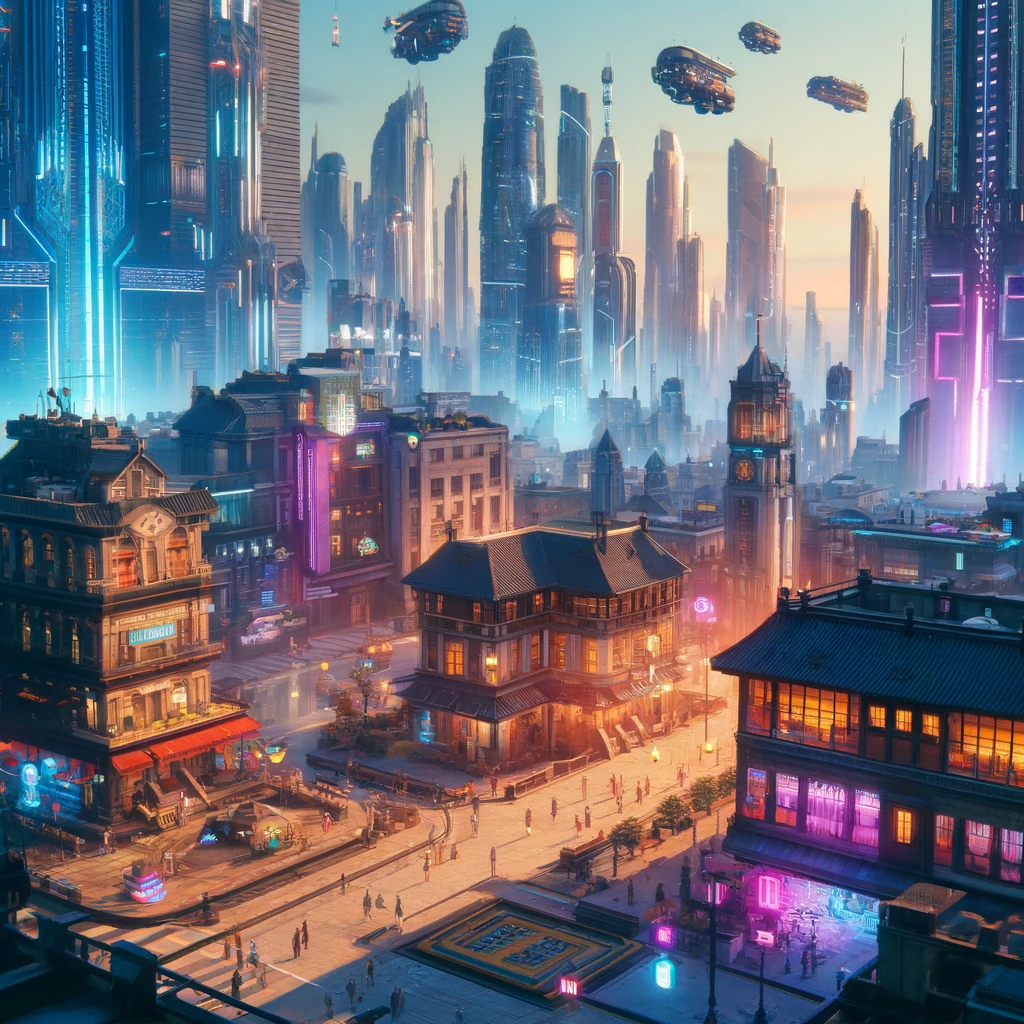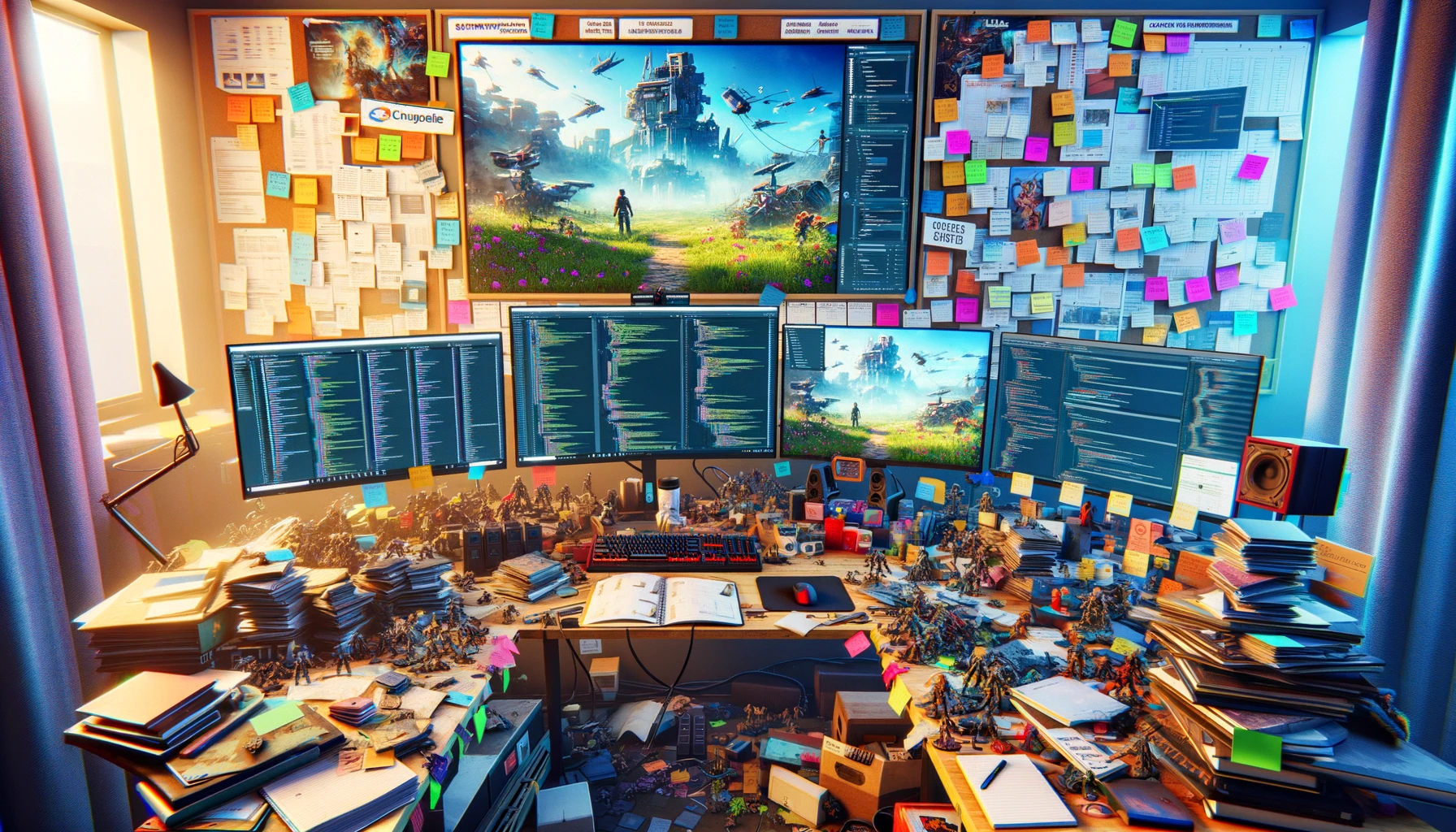Here’s the image of a futuristic cityscape designed in a stylized semi-realistic art style, reflecting the visual concept for “Chronosynclastic Infundibulum”. This scene blends modern and ancient architectural elements, enhanced with neon lights and a moody atmosphere, similar to the aesthetics found in games like ‘Dishonored’ and ‘Bioshock Infinite’.

Starting development with Godot for your game “Chronosynclastic Infundibulum” involves a strategic approach to maximize efficiency and ensure a solid foundation. Here’s a suggested order to begin development:
1. Setup Development Environment
- Configure Godot: Install and set up Godot 4.2 on your development machines.
- Version Control: Establish a version control system (like Git) to manage and collaborate on your project files effectively.
- Project Structure: Organize your project structure within Godot, setting up main directories for assets, scripts, scenes, etc.
2. Prototype Core Mechanics
- Time Manipulation: Start by prototyping the basic time manipulation mechanics, as they are central to the gameplay. Ensure that you can rewind, pause, and fast-forward time within the game scenes.
- Basic Movement and Interaction: Implement fundamental player movements and interactions with the environment to test the gameplay loop.
3. Create a Basic Level
- Level Design: Design a simple level or scene in Godot that incorporates different temporal zones and allows you to test the time manipulation mechanics in a controlled environment.
- Collision and Physics: Set up basic collision detection and physics to ensure that interactions within the game world are realistic and functional.
4. Develop UI and Basic Controls
- User Interface: Develop a basic user interface, including menus, game settings, and an in-game HUD that displays relevant information like time energy levels or detective tools.
- Input Handling: Configure controls for various input devices (keyboard, mouse, gamepad) to handle the game’s interactions smoothly.
5. Implement Initial Art and Sound
- Placeholder Art: Use simple placeholder art and assets to start building out the visual style of the game. This allows you to focus on gameplay mechanics without getting bogged down in detailed art production.
- Basic Sound Effects: Integrate basic sound effects, particularly for time manipulation, to enhance the immersive experience and provide feedback for player actions.
6. Script Core Gameplay Elements
- Gameplay Scripts: Write scripts for the core gameplay elements, including NPC interactions, puzzle mechanics, and the consequences of time manipulation on the game environment.
- Dynamic Events: Script events that change based on player actions and decisions, testing the impact of these changes on the game’s narrative and world.
7. Iterate and Refine
- Playtesting: Begin internal playtesting to refine mechanics, controls, and the overall feel of the game. Collect feedback and make adjustments as needed.
- Optimization: Start optimizing the game’s performance to ensure it runs smoothly across different PC configurations.
8. Expand Game Content
- Additional Levels and Scenarios: Once the core mechanics are solid, start developing additional levels, scenarios, and puzzles that utilize the game’s time manipulation theme.
- Detailed Art and Sound: Gradually replace placeholder assets with final art and sound, enhancing the aesthetic quality and atmosphere of the game.
9. Prepare for Early Feedback
- Beta Releases: Consider releasing a beta version to a limited audience or early access platforms to gather wider feedback and identify areas for improvement before the full release.
By following these steps, you can effectively leverage Godot to build “Chronosynclastic Infundibulum”, ensuring a solid gameplay foundation and gradually expanding into a fully realized game. Would you like to dive deeper into any of these development stages?
